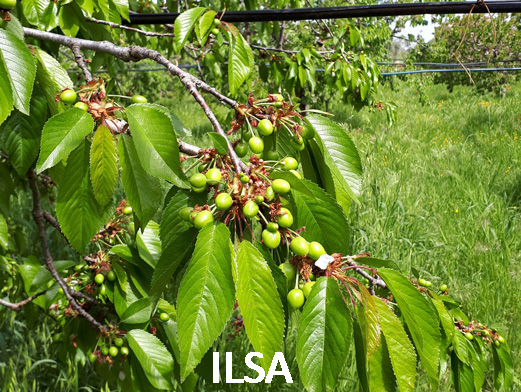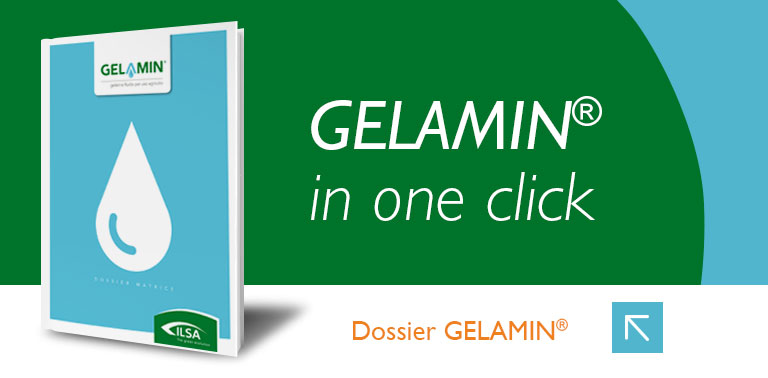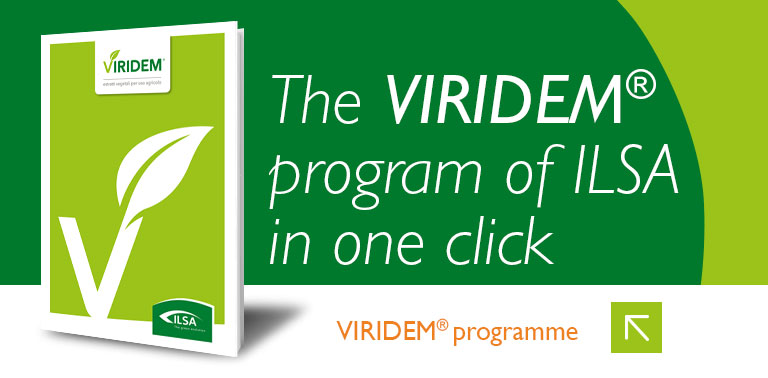Editorials
Cherry plants: fruit setting and yield guaranteed with the Enzymatic Hydrolysate of Fabaceae
The 100% vegetable biostimulant guarantees fruit setting and higher yields, even in extreme climate situations.
24/04/2019
If a litmus test was still needed, it has arrived punctually
The Enzymatic Hydrolysate of Fabaceae, with a 100% plant origin and recognized within the "biostimulant" category by Italian legislation (Legislative Decree 75/2010), has confirmed its effectiveness in terms of the increase of fruit set, and therefore of the final yield, of tree crops. After the excellent results already obtained in the past years – in which formulations based on the enzymatic hydrolyzate of Fabaceae (ILSAC-ON, ILSAVEGETUS) had favoured abundant blooms and always a higher percentage of fruit set than in case of untreated plants – the results obtained in the spring of 2018 represent irrefutable proof of these biostimulants’ effectiveness.
Burian (the name given to a very adverse weather conditions that have occurred in Italy last year) does not scare us
We all remember the terrifying end of last winter. When everything seemed to have passed, with many stone fruits already in bloom, the arrival of Burian (first) and Burian Bis (afterwards) have affected the setting and therefore the final yield in many regions of Italy, particularly in the South. Among the most affected crops were the olive tree primarily, but also cherry, plum, apricot and peach. Coincidentally, at that time, there was an ongoing trial on cherry (the Ferrovia variety) in the countryside of Rutigliano, in the province of Bari. The objective was evaluating the effectiveness of different biostimulant formulations; this involved first the evaluation of thermal stress tolerance, the increase in fruit setting and reduction in fruit drop. Thus, the applications of ILSATERMIKO (biostimulant based on left-handed amino acids, with a high content of proline) starting from the vegetative restart and, above all, of ILSAC-ON have made it possible to limit the negative effects of the late cold.
The proven evidence on yields: They were higher
With three foliar applications at 2 kg/ha, the first with 20% open flowers, the second with complete flowering and the third in post-fruit setting, ILSAC-ON has favoured a percentage of fruit set (out of the total number of open buds) by 67%, compared to 32% of the untreated witness samples. This resulted in an average yield per plant of about 20 kg of cherries, compared to the yield of 14 kg in case of the untreated plants.
| Protocol | Thesis ILSA | Testimonial |
|---|---|---|
| Flowering 20% (08/04/2018) |
IlsaC-on: 2 kg/ha Ilsamin Multi: 2 kg/ha |
/ |
| Flowering 100% (20/04/2018) |
IlsaC-on: 2 kg/ha (in mixture with boron) |
Product based on boron |
| Post-fruit setting (03/05/2018) |
IlsaC-on: 2 kg/ha (in mixture with boron) |
Product based on boron |
| Results | ||
| Evaluation of flowering uniformity (15/04/2018) |
84,5% open flowers 15,5% white buttons |
67% open flowers 33% white buttons |
| % Fruit set on total open buds (10/05/2018) |
67% | 32% |
| Average yield (kg/plant) |
20 | 14 |
The evidence on the cherry trees
Furthermore, it is visually evident (the Ilsa thesis is on the left and the witness on the right in the above pictures) that the best result is favoured by the Enzymatic Hydrolysate of Fabaceae in terms of setting, confirming what has already occurred in the past few years in case of cherry trees. The 100% vegetable origin and the physico-chemical characteristics of the biostimulant (obtained from an enzymatic hydrolysis process) allow its use in both biological agriculture and its combined application with other microelement-based fertilizers or even with pesticides.
How does the enzymatic hydrolysate of Fabaceae work?
Genetic and other environmental factors – including the "photoperiod" (the right number of hours of light per day, which allows the meristematic cells to proliferate, differentiating into flowers and inflorescences), the temperature, the presence of nutrients and the balance of enzymatic and hormonal systems – are necessary to stimulate the fruit set processes and affect the regular process of flowering and setting. The Enzymatic Hydrolysate of Fabaceae acts by balancing the vegetative (development and flowering) and reproductive (fruit setting and fruit development) phases, providing sufficient energy to support flowers and fruits through a balanced distribution of nutrients and positively stimulating all the phases that lead to the initial development of the small fruits. The natural triacontanol, the phenolic extracts and the vegetable amino acids contained in the Enzymatic Hydrolysate of Fabaceae stimulate the activity of the enzymes that regulate the main reactions of carbon and nitrogen metabolism, thus favouring photosynthesis, flowering and fruit set, thereby limiting the negative influences of environmental stresses.







.png)
















